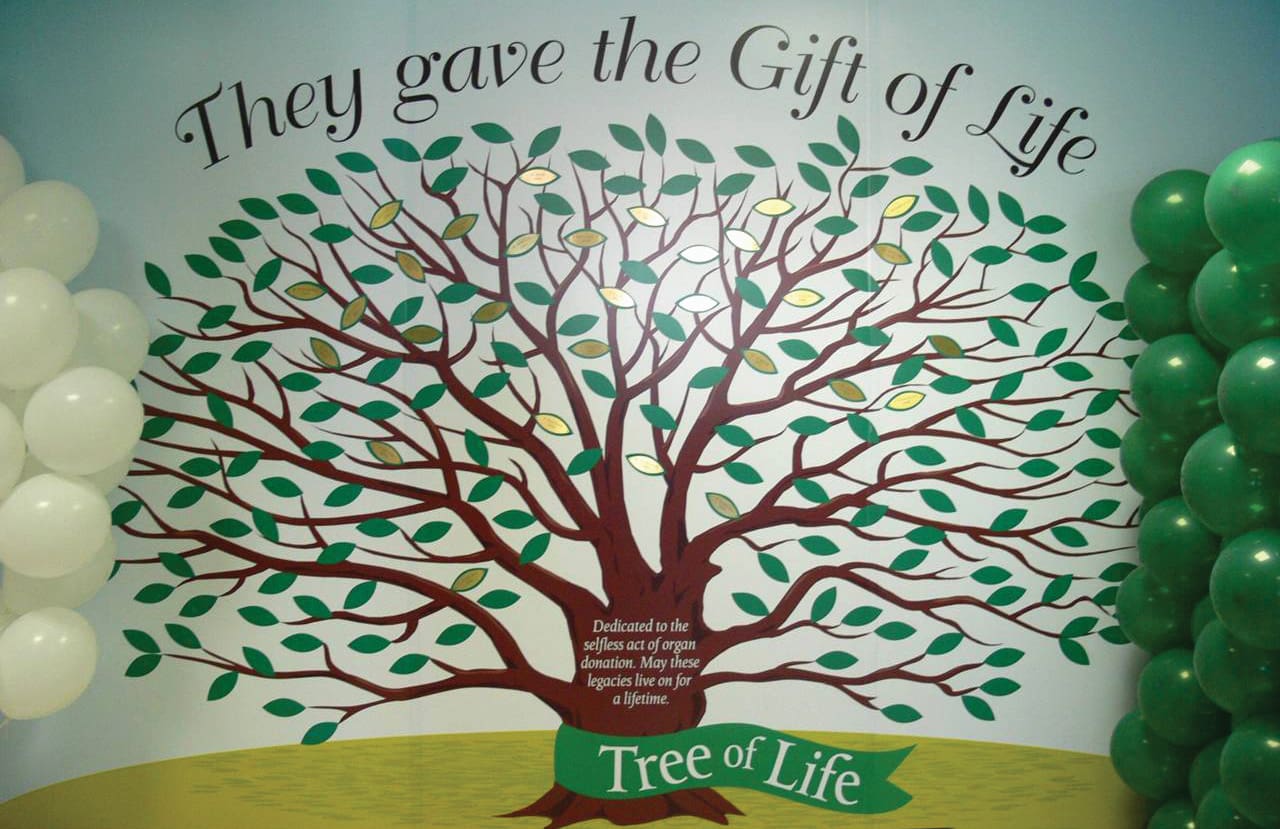In the United States, more than 15,000 families a year make the difficult decision to donate their loved ones’ organs. One day in August 2005, two of these families made the decision at our level I trauma center.
Two young men who suffered nonsurvivable injuries were airlifted to our facility. Their deaths left a 7-year-old son without a father and an 8-year-old boy without a brother. Based on their desire to do something life-affirming in the face of tragedy, both families decided to donate the organs of their loved ones.
Creating the tree
After the events of that day, our staff and the staff of the local organ procurement organization undertook an initiative to pay tribute to these donors, publicly recognize the families’ sacrifice, and help provide closure for the nursing staff that cared for the patients. After several meetings, our planning committee decided to create a Tree of Life mural and organize an annual Tree of Life ceremony to honor those who gave the gift of life at our facility. We placed the large mural in the hallway of the transplant unit to remind recipients that the legacies of others live on through them.
After compiling a list of organ donor families from previous years, we mailed invitations to the first Tree of Life celebration. We also invited speakers who represented our facility and the procurement organization as well as members of donor families. Thirty-one families accepted the invitation. Some sent notes expressing their thoughts about the ceremony. One said:
“I think that it is absolutely wonderful that you are doing the Tree of Life. It makes us proud any time our son Randy’s life is remembered. We want everyone to know that there was a Randy on this earth and that he made a difference in the world. His life meant something, and not just to us.”
A celebration of life
At the event, speakers expressed their admiration for both the donors and the families, as these excerpts from one speaker’s remarks indicate:
“We are here to honor the ones who made the gift of organ donation possible, but we are also here to honor the families, who made the decision to proceed with organ donation.
“Many things come to mind that might accurately describe the decision: courageous, altruistic, kind, heroic…all of these are true descriptors, but the word that best describes it for me is love.”
Colored balloons lined the hallway—a reminder of those who gave and those who received. The organ donors were represented by 28 white balloons, and the recipients were represented by 104 green balloons. As donors were acknowledged, family members placed brass leaves engraved with their loved one’s name on the mural.
Hope and promise
At the reception after the celebration, we gave each family a Texas mountain laurel. In south Texas, a sure sign of spring is the sweet fragrance of the blossoming Texas mountain laurel. Its brilliant, gentle purple buds remind us that a new season has arrived, filled with hope and the promise of sunshine. For the families, the mountain laurel signifies the hope for continuing courage in trying times and the promise that new life is all around us.
Charles Reed is patient care coordinator in the surgical trauma intensive care unit at University Hospital; Leni Kirkman is director of corporate communications at University Health System; Susan Gerhardt is administrative director in the surgical trauma intensive care unit at University Hospital; and Karen Shaver is manager of hospital services at the Texas Organ Sharing Alliance. All work in San Antonio, Texas.


















